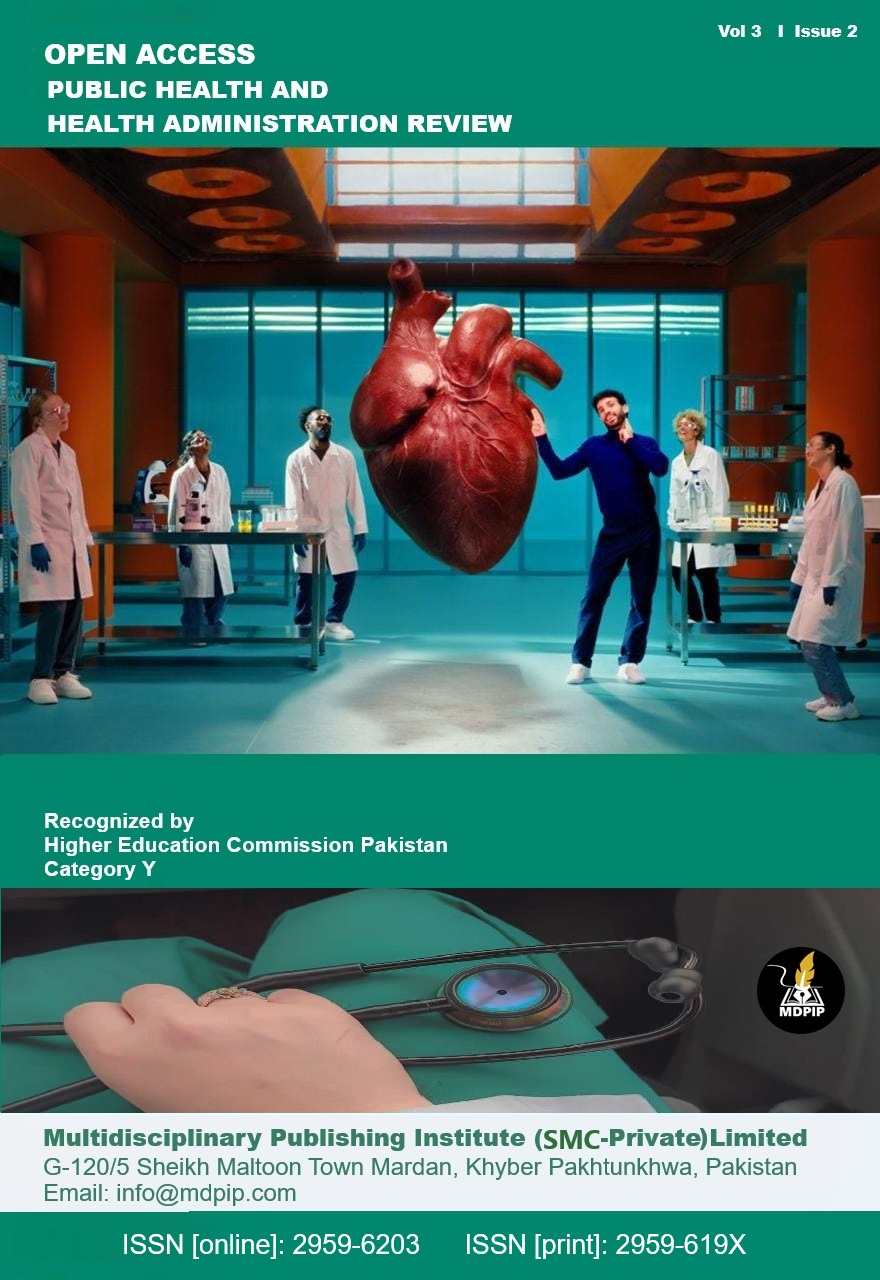Strategies for Coronary Artery Disease Prevention at Ayub Teaching Hospital: Challenges, Opportunities, and Future Directions
DOI:
https://doi.org/10.59644/oaphhar.3(2).166Keywords:
Coronary Artery Disease, Prevention Strategies, Ayub Teaching Hospital, Cardiovascular Health, Risk Factors, Public Health Interventions, Medication Adherence, Healthcare ChallengesAbstract
CAD is still a pressing global health issue and a leading cause of mortality and morbidity; its incidence is increasingly observed in developing countries, including Pakistan. The paper aims to explore the CAD prevention plan within ATH, analyzing its successes and failures, barriers, and positives, and future planning to reduce this disease. A cross-sectional survey design was adopted to collect data from CAD patients, high-risk individuals, and healthcare providers regarding awareness, preventive practices, medication compliance, and perceived barriers to CAD prevention. The findings show that there is low awareness of CAD, particularly among high-risk groups, failure to follow necessary lifestyle changes, and issues around medication use. Lack of financial resources, low levels of health literacy, and the overall shortage of primary healthcare facilities were identified as the primary challenges affecting prevention. Lack of patient compliance, shortage of resources, and a heavy workload were attributed by most healthcare providers as some of their major challenges in CAD management. However, increased interest was prevalent in community-based prevention programs, telemedicine, and low-cost healthcare services, which point to potential obstacles. Thus, the development of an effective system to fight CAD requires a multi-faceted approach based on the organization of special targeted public health programs, increasing accessibility in healthcare, and utilizing information technologies. Improving primary health care, employing preventive cardiology, and reforming policies will reduce CAD rates in Pakistan in significant ways. The findings of this research are valuable to guide future activities to improve CAD prevention at ATH and to establish national-level policies for cardiovascular disease prevention.






